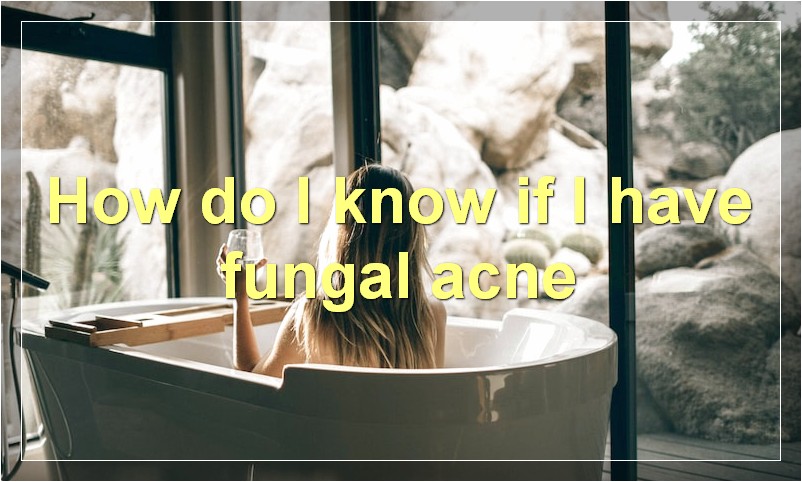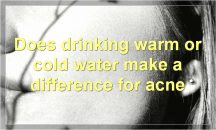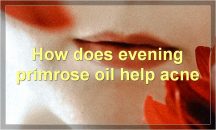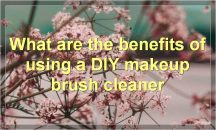If you’re struggling with fungal acne, don’t worry—you’re not alone. Here are four expert-approved tips to help you get rid of it for good.
How can I prevent fungal acne
Acne is a common skin condition that affects people of all ages. While there are many different types of acne, fungal acne is one of the most difficult to treat. Fungal acne can be caused by a number of different fungi, including Candida, Aspergillus, and Malassezia. These fungi live on the surface of the skin and feed on the sebum produced by the sebaceous glands. This can lead to an overgrowth of the fungus, which can then cause inflammation and the formation of pimples.
There are a number of things you can do to prevent fungal acne. First, it is important to keep your skin clean. Wash your face twice a day with a gentle cleanser. Be sure to remove all makeup before you go to bed. Second, use an anti-fungal cleanser or soap on your skin. These products will help to kill the fungi that cause fungal acne. Third, avoid using oils and creams on your skin. Oils and creams can provide the perfect environment for the growth of fungi. Finally, if you have any cuts or scrapes on your skin, be sure to clean them well and cover them with a bandage. By following these tips, you can help to prevent the formation of fungal acne.
How do I know if I have fungal acne

Fungal acne is a type of skin infection that is caused by a fungus. The most common symptom of fungal acne is a rash that appears on the face, neck, chest, or back. Other symptoms may include redness, itching, and scaling. Fungal acne is most often seen in people who are immunocompromised, such as those with HIV/AIDS or cancer. It can also occur in people who have diabetes or take certain medications, such as steroids or antibiotics. Treatment for fungal acne typically involves the use of antifungal creams or ointments. In severe cases, oral antifungal medications may be necessary.
What are the symptoms of fungal acne
Fungal acne is a skin condition that is caused by an overgrowth of fungi. The symptoms of fungal acne include:
-White, scaly patches on the skin
-Red, itchy skin
-Thick, white discharge from the skin
-Skin irritation and inflammation
If you think you have fungal acne, it is important to see a dermatologist so they can properly diagnose and treat your condition.
What are the most common causes of fungal acne
Fungal acne is a skin condition that can be caused by a number of different things. Some of the most common causes of fungal acne include:
• Not washing your face regularly: If you don’t wash your face regularly, the natural oils on your skin can build up and create an environment that is conducive to the growth of fungus.
• Using oily cosmetics: If you use cosmetics that are high in oil content, this can also lead to the development of fungal acne.
• Wearing tight clothing: Clothing that is tight fitting can rub against your skin and create an environment that is favorable for the growth of fungus.
• Living in a humid climate: Humid climates provide the perfect environment for the growth of fungus.
If you suspect that you may have fungal acne, it is important to see a dermatologist so that they can properly diagnose and treat the condition.
Can fungal acne be cured
Fungal acne is a type of skin condition that is caused by an overgrowth of yeast on the skin. The overgrowth of yeast can lead to inflammation, redness, and bumps on the skin. While there is no cure for fungal acne, there are treatments that can help to control the symptoms.
What is the best way to treat fungal acne

There is no one-size-fits-all answer to this question, as the best way to treat fungal acne will vary depending on the individual’s skin type and severity of the condition. However, some general tips on how to treat fungal acne include keeping the affected area clean and dry, avoiding harsh cleansers and exfoliants, and using antifungal medications as prescribed by a healthcare professional.
Is fungal acne contagious
Fungal acne is a skin condition that is characterized by the presence of small, red bumps on the skin. The bumps are typically found on the face, chest, and back. Although fungal acne is not contagious, it can be difficult to get rid of.
Fungal acne is caused by a type of fungus called Malassezia. This fungus is found on the skin of humans and animals. It normally doesn’t cause any problems. However, if the fungus grows out of control, it can lead to skin irritation and the formation of small bumps.
There are several things that can trigger an overgrowth of Malassezia, including:
– humid weather
– sweating
– oily skin
– tight clothing
– use of certain cosmetics or skincare products
If you have fungal acne, you may notice that the bumps appear after you’ve been sweating or wearing tight clothing. The bumps can also worsen in humid weather.
Fungal acne is often mistaken for other skin conditions, such as acne vulgaris, pityrosporum folliculitis, or seborrheic dermatitis. These conditions can cause similar symptoms, so it’s important to see a doctor for a diagnosis.
There is no cure for fungal acne, but there are treatments that can help to control the growth of the fungus and reduce the number of bumps. Treatment options include antifungal creams, lotions, or gels. You can also try using a medicated shampoo or soap. In severe cases, oral antifungal medication may be necessary.
If you have fungal acne, it’s important to keep your skin clean and dry. Avoiding triggers that can cause an overgrowth of the fungus can also help to prevent flare-ups.
How long does it take for fungal acne to clear up
Fungal acne is a condition that can cause your skin to break out in pimples. The pimples are caused by an overgrowth of yeast on your skin. The yeast grows in the sebaceous glands, which are the glands that produce oil. The overgrowth of yeast causes the sebaceous glands to become inflamed and the pimples to form.
Fungal acne is not contagious, but it can be difficult to get rid of. It is important to see a dermatologist if you think you have fungal acne so they can prescribe the appropriate treatment. Treatment for fungal acne usually includes antifungal creams or oral medications. In some cases, your dermatologist may also recommend light therapy.
Most people with fungal acne see an improvement in their symptoms within a few weeks of starting treatment. However, it may take several months for the acne to completely clear up. If your acne does not improve with treatment, or if it gets worse, be sure to talk to your dermatologist.
What can I do to get rid of my fungal acne
Fungal acne can be a troublesome skin condition to deal with. It often presents itself as small, red bumps on the face that can be both itchy and painful. If you’re dealing with fungal acne, there are a few things you can do to get rid of it.
First, try to keep your skin clean and free of oil. Wash your face twice a day with a gentle cleanser and make sure to remove all makeup before going to bed. You may also want to use an astringent toner to help keep your pores clean.
Second, don’t forget to exfoliate. Fungal acne can often lead to clogged pores, so it’s important to slough away dead skin cells on a regular basis. You can use a physical or chemical exfoliator for this step. Just be sure to use a light hand so you don’t irritate your skin.
Third, apply a topical antifungal cream or gel to the affected areas of your skin. This will help kill off the fungus that’s causing your acne. Be sure to follow the directions on the package so you don’t overdo it and end up irritating your skin.
Finally, make sure you’re getting enough sleep and reducing stress in your life. Both of these things can make fungal acne worse, so it’s important to take care of yourself both mentally and physically.
If you follow these tips, you should see a reduction in your fungal acne within a few weeks. However, if your acne doesn’t improve or if it gets worse, be sure to see a dermatologist so they can give you more specific treatment recommendations.
What are some home remedies for fungal acne
When it comes to home remedies for fungal acne, there are a few things you can do to help clear up your skin. First, try to keep your skin clean and dry. Wash your face twice a day with a mild soap and water, and be sure to pat your skin dry afterwards. You may also want to use an anti-fungal cream or ointment, which you can find at most drugstores. Apply the cream or ointment to the affected areas of your skin, and let it sit for a few minutes before rinsing it off. You should see a difference in your skin within a few days. If you don’t, consult a dermatologist to find out other possible treatments.





